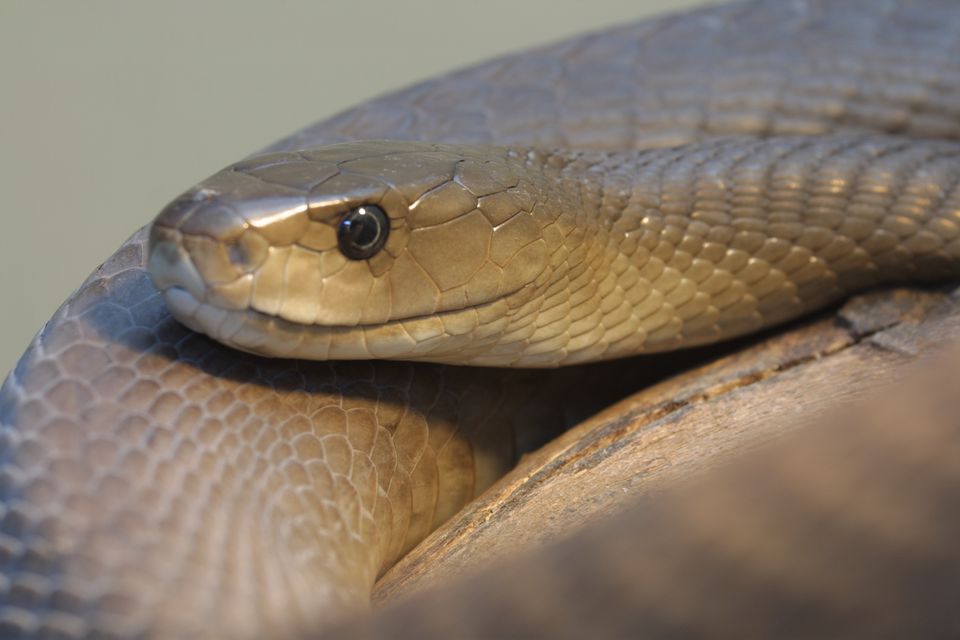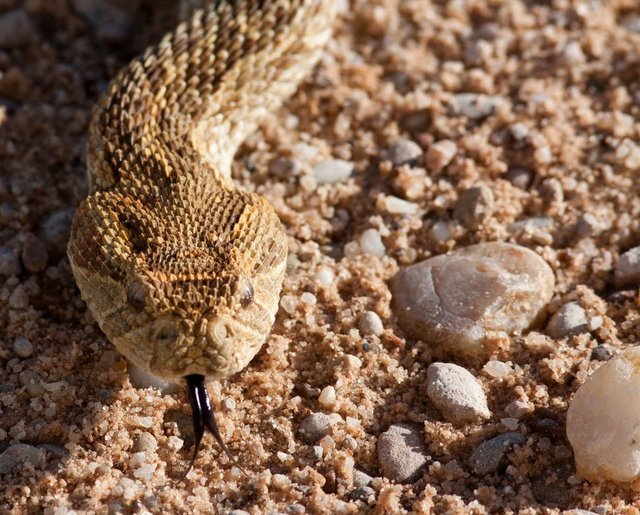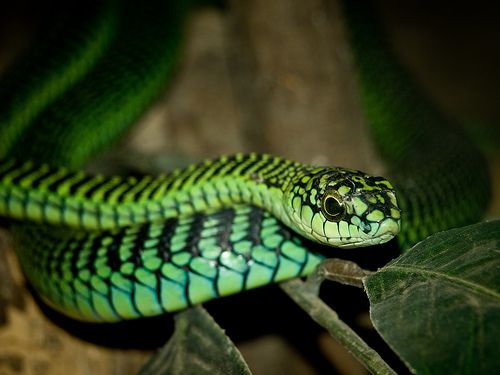The African continent is home to many different snake species, some of which are amongst the world's most dangerous. These range from legendary species like the black mamba, to little-known snakes like the West African carpet viper. looking at a few of Africa's most feared snake species, before exploring different kinds of snake venom and the unique ways that each affects the human body.
It is important to remember that although snakes must be treated with respect, the majority of snake species are not venomous. Even those that are will typically try to avoid contact with humans rather than risk confrontation. All snake species are important to the balance of the African ecosystem, fulfilling a valuable role as middle-order predators. Without them, rodent populations would soar out of control. Instead of fearing them, we should endeavor to understand and conserve them.
- The black mamba (Dendroaspis polylepis) is not the most venomous African snake species, it is nevertheless the most feared. There are several reasons for this - including its aggressive nature when cornered and its large size. It is the largest of the continent's venomous snake species, with an average length of approximately 8.2 feet/ 2.5 meters. Black mambas are the fastest of all indigenous African snakes, and often strike more than once. Their venom is composed of neurotoxins and cardiotoxins, and can cause a human to collapse after just 45 minutes. Without anti-venom treatment, it is almost 100% certain that the victim will die, usually within seven to 15 hours. Despite their name, black mambas are not black but brown or olive-skinned. They are found throughout a wide range of habitats in sub-Saharan Africa and usually spend their time on the ground rather than in trees.

2.The puff adder (Bitis arietans) is considered to be Africa's deadliest snake because it is responsible for the most human fatalities. This is due to a variety of factors, including the snake's wide distribution, its prevalence in populated areas and its relatively aggressive nature. Puff adders reach an average length of around 3.3 feet/ 1.0 meters and have a solid build accentuated by a wide girth and a blunt snout. They are found throughout sub-Saharan Africa, and their color patterns vary depending on where they live. Puff adders rely on their exceptional camouflage for protection and remain still rather than fleeing from approaching danger. Because of this, people are often bitten after accidentally stepping on them. Of all viper species, the puff adder's venom is amongst the most venomous, however most fatalities occur as a result of poor treatment. Even in untreated cases, the mortality rate can be as low as 15%.
3.The boomslang (Dispholidus typus) is known as one of the most venomous snakes on the continent. Its venom is haemotoxic, which means that it disables the body's natural blood-clotting mechanism and triggers uncontrollable external and internal bleeding. The venom is slow-acting, with symptoms taking several hours to present themselves. Because of this, victims sometimes assume that they don't need treatment, which can increase the severity of the eventual damage. Despite the potency of the boomslang's bite, human fatalities are rare. This is because boomslangs are typically timid, and flee from humans rather than attacking them. They are tree-dwelling snakes (their name means "tree snake" in Afrikaans). Coloration varies, but males are typically light green with black or blue scale edges, while females are often brown. Boomslangs have exceptionally large eyes and reach an average length of around 5.2 feet/ 1.6 meters.

Aussie snakes are pretty, to be respected and highly venomous also. We know the joys, and precautions, of life in an interesting environment also.
Downvoting a post can decrease pending rewards and make it less visible. Common reasons:
Submit
Hi! I am a robot. I just upvoted you! I found similar content that readers might be interested in:
https://www.tripsavvy.com/africas-most-dangerous-snakes-1454122
Downvoting a post can decrease pending rewards and make it less visible. Common reasons:
Submit